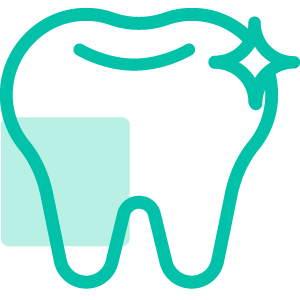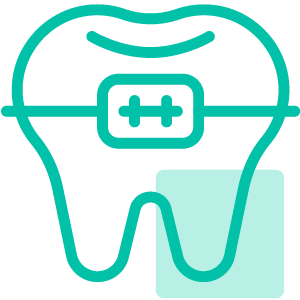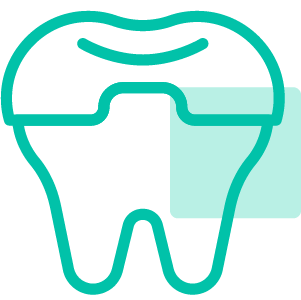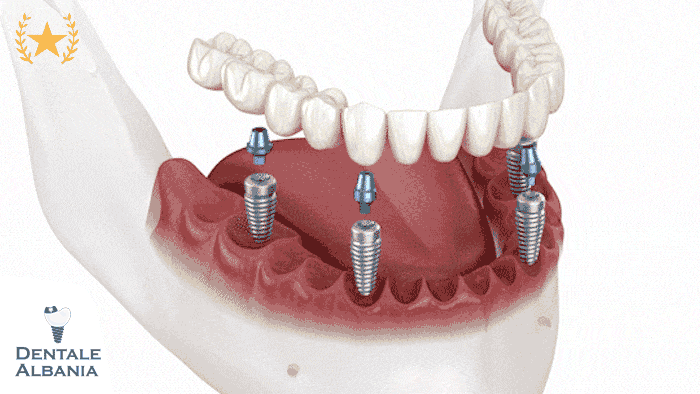Table of Contents
ToggleWhat Are Nasal Implants and Why Are They Used?

Introduction to Nasal Implants: Overview of the role and function of nasal implants in enhancing both nasal airflow and aesthetics
Nasal implants have become an innovative solution for people seeking to improve both the functionality and appearance of their nose. These implants are typically used to support and enhance the structure of the nose, specifically improving airflow for individuals suffering from nasal airway obstructions. Not only do nasal implants help in treating medical conditions like nasal valve collapse, but they can also provide subtle cosmetic enhancements to the nose’s shape, providing a better balance with facial features.
Nasal implants are essential in supporting the lateral walls of the nose, which play a significant role in breathing. When weakened, typically due to aging, trauma, or anatomical conditions, the nasal sidewalls can collapse during breathing, leading to difficulty in nasal airflow and a blocked or congested feeling. This can cause discomfort and exacerbate other conditions like snoring, sleep apnea, and overall poor sleep quality.
In addition to functional improvements, nasal implants can provide cosmetic benefits by subtly altering the shape of the nose. Implants like the Latera absorbable nasal implant are designed to enhance the structural integrity of the nose without significantly altering its external appearance. This makes them an appealing option for individuals who want to improve their breathing while maintaining a natural-looking nose.
Different Types: Cosmetic vs. Functional Implants
There are two main categories of nasal implants: cosmetic implants and functional implants. Cosmetic implants are typically used during rhinoplasty procedures to alter the shape and appearance of the nose, enhancing features like the nasal bridge or tip. Functional implants, on the other hand, are primarily designed to address specific medical conditions such as nasal valve collapse, where the internal nasal structures weaken and restrict airflow.
While cosmetic implants focus on enhancing the nose’s aesthetics, functional implants serve a more therapeutic role, ensuring the nasal passages remain open and facilitating easier breathing. Some implants, like Latera, combine both functions by offering functional support to the nasal structure while minimizing cosmetic changes.
Materials Used: Medpore, Gortex, Silicone, Absorbable Materials (Latera)
The materials used for nasal implants vary depending on the desired outcomes. Common materials include Medpore, Gortex, silicone, and absorbable materials such as Latera. Medpore and Gortex are widely used for their durability and ability to integrate with surrounding tissues, providing long-term structural support. Silicone, though less commonly used for functional purposes, is often employed for aesthetic enhancements due to its flexibility and biocompatibility.
The Latera implant, a bioabsorbable material, is particularly notable because it gradually dissolves over time, typically within 18-24 months. This type of implant is advantageous as it doesn’t require removal and supports the nasal wall until the body naturally replaces the implant with its collagen, ensuring continued nasal airflow support.
How Do Nasal Implants Work? Enhancing Your Nose’s Structure and Function
Supporting Nasal Airflow and Structure: How implants support the nasal wall and improve breathing
Nasal implants play a crucial role in improving airflow by providing structural support to the nasal walls, which helps prevent the collapse of the nasal valve. The nasal valve is the narrowest part of the nasal passage and plays a vital role in regulating airflow. If the nasal valve collapses, even slightly, it can lead to significant difficulty breathing through the nose, often causing symptoms like chronic congestion, snoring, and reduced airflow during physical exertion or while sleeping.
In cases of nasal valve collapse, a functional implant like Latera is inserted into the lateral nasal wall, providing a scaffold to support the weakened cartilage. This support prevents the sidewall of the nose from collapsing inward, ensuring that the nasal passage remains open during breathing. By reinforcing the nasal valve, these implants restore proper airflow, reducing the feeling of congestion and improving overall nasal function.
This process is particularly beneficial for individuals suffering from conditions such as deviated septum, chronic rhinosinusitis, or facial trauma, where the nasal passageways are structurally compromised. By restoring the nasal structure, implants improve overall breathing, making it easier to take in air and improving quality of life.
Nasal Valve Collapse and Its Effect on Airflow
When the nasal valve becomes weakened, airflow is restricted. The nasal valve collapse can occur due to several factors, including injury, aging, or congenital conditions. As the walls of the nasal cavity lose strength, they may collapse during inhalation, making it difficult for air to pass through the nose effectively. This results in nasal congestion, difficulty breathing, and other associated issues like snoring and poor sleep quality.
Nasal valve collapse often goes unnoticed, as the symptoms can resemble those of common cold or allergies. However, unlike seasonal conditions, nasal valve collapse persists, and its symptoms are not alleviated with medications. In these cases, nasal implants such as Latera provide a lasting solution by stabilizing the nasal valve and improving airflow, without the need for more invasive surgeries like rhinoplasty or septoplasty.
The Role of Lateral Wall Support in Improving Nasal Passageways
The lateral wall support provided by nasal implants is essential for ensuring that the nasal passage remains open during inhalation. The lateral wall is the outermost section of the nasal cavity, and when it becomes weak, the nasal valve is unable to function optimally, leading to restricted airflow. Implants like Latera are specifically designed to provide lateral support, ensuring that the sidewall of the nose remains sturdy during breathing.
This support not only alleviates symptoms of nasal obstruction but also prevents the recurrence of collapse in the future. By reinforcing the lateral wall, the implant helps maintain an open airway, improving both the functionality and comfort of nasal breathing.
Cosmetic Impact: Subtle Changes to the Shape of the Nose Without Visible Alteration
While the primary goal of nasal implants like Latera is to improve nasal airflow, they can also provide subtle cosmetic benefits. The implant works by reinforcing the structure of the nose, which can lead to minor changes in the appearance of the nose. However, these changes are usually not noticeable to others, making Latera a popular option for patients who want to enhance their breathing without undergoing major cosmetic surgery.
The benefit of this subtle alteration is that it enhances both function and aesthetics without the need for drastic changes to the appearance of the nose. Many patients appreciate this aspect of the procedure, as it allows them to improve their quality of life without drawing attention to their appearance.
How Long Do Nasal Implants Last?
Durability of Nasal Implants: Overview of the Longevity of Different Nasal Implants
The longevity of nasal implants largely depends on the type of implant used and the individual’s response to the treatment. Non-absorbable implants, such as those made from silicone, Medpore, and Gore-Tex, are designed to last indefinitely. These materials provide permanent structural support, and once placed, they remain in the nasal cavity unless removal is required due to complications or aesthetic concerns.
On the other hand, absorbable implants like Latera are designed to gradually dissolve over time. This type of implant is absorbed by the body typically within 18 to 24 months, after which the body forms natural scar tissue to replace the implant. While Latera does not provide permanent physical support, the collagen formed during the absorption process continues to provide long-term support to the nasal walls. This offers a natural and gradual improvement in airflow and nasal function without the need for permanent foreign materials.
Absorbable Implants Like Latera: Timeline for Absorption and Benefits
The Latera absorbable nasal implant is specifically designed for patients with nasal valve collapse. It is made from a biocompatible material, PLLA (Poly-L-lactic acid), that provides support to the lateral nasal walls. Over the course of 18-24 months, the implant gradually dissolves and is replaced by the body’s natural collagen. This gradual process has multiple benefits:
- Temporary Structural Support: Initially, the implant stabilizes the lateral wall, preventing collapse during inhalation.
- Long-Term Results: As the implant is absorbed, it stimulates the formation of scar tissue that provides ongoing structural support for the nasal valve.
- Lower Risk of Complications: Absorbable implants eliminate the need for future removal, unlike permanent implants that may require surgical intervention if complications arise.
Patients typically experience significant improvements in breathing and nasal airflow during the 18-24 months of the implant’s presence, followed by continued benefits even after the implant is fully absorbed.
Patient Results and Clinical Studies: How Long the Effects Last and Long-Term Outcomes
Clinical studies have shown that the effects of Latera implants last well beyond their absorption. A study on patients who underwent the Latera nasal implant procedure found that after the implant was fully absorbed, the Nasal Obstruction Symptom Evaluation (NOSE) score improved by 52% on average. This improvement was maintained even after the implant was absorbed, indicating that the scar tissue formed around the implant provided long-term support to the nasal walls.
In general, patients can expect long-term symptom relief from nasal obstruction, with many experiencing significant improvements in nasal breathing, sleep quality, and overall comfort. These long-term outcomes make Latera a compelling choice for individuals looking for a minimally invasive solution to nasal valve collapse.
Are Nasal Implants Safe?

Risks and Safety Concerns: Discussing the Potential Complications such as Infections and Side Effects
As with any medical procedure, nasal implants come with some potential risks and safety concerns. While Latera and other nasal implants have a low complication rate, it’s important for patients to be aware of possible side effects and complications associated with the procedure.
Some of the common risks associated with nasal implants include:
- Infection: Although infections are rare, they can occur, particularly if the implant becomes exposed to bacteria during the insertion process or due to poor post-procedure care.
- Allergic Reactions: Some patients may experience allergic reactions to the materials used in the implants, though this is less common with biocompatible materials like PLLA.
- Implant Displacement: In rare cases, the implant may shift from its original position, which can lead to discomfort or changes in the cosmetic appearance of the nose.
- Irritation: There may be temporary discomfort, swelling, or inflammation at the implant site. These symptoms usually subside within a few days to weeks following the procedure.
Minimizing Risks Through Professional Consultation and Aftercare
The key to minimizing the risks associated with nasal implants is choosing a qualified ENT specialist and following all post-operative care instructions. A thorough consultation before the procedure will help identify any existing conditions that may affect the implant’s success, such as:
- Existing nasal conditions like deviated septum, which may require additional treatment.
- Prior nasal surgeries that could influence the positioning and stability of the implant.
- Health conditions that might affect healing, such as diabetes or autoimmune disorders.
Following aftercare guidelines is also critical to prevent complications such as infection or irritation. Common aftercare instructions include:
- Avoiding excessive pressure on the nose for several weeks.
- Regular follow-up appointments to monitor the implant’s positioning and the healing process.
- Proper hygiene to prevent infection at the surgical site.
Safety Profile of Absorbable Implants: Latera and Its Lower Risk of Complications
Latera is particularly noted for its safety profile, as the material used is both biocompatible and absorbable, which reduces the need for additional surgeries. Absorbable implants like Latera are associated with a lower risk of long-term complications compared to permanent implants, such as silicone or Gore-Tex, which may require removal or could cause ongoing issues like infection or extrusion. Additionally, since Latera is gradually absorbed by the body, the risk of chronic issues such as implant displacement or long-term infection is significantly reduced.
Patients who opt for Latera can generally expect fewer complications and a faster recovery time compared to more invasive surgical options. The natural absorption of the implant, followed by the body’s formation of supportive tissue, ensures lasting benefits without the risks associated with permanent materials.
How Much Do Nasal Implants Cost?
Factors Affecting the Cost of Nasal Implants: Pricing Breakdown Based on the Type of Implant and Procedure
The cost of nasal implants can vary depending on several factors, including the type of implant, the location of the procedure, and the complexity of the surgery. Here’s a breakdown of the factors that influence the price:
- Type of Implant:
- Absorbable implants like Latera tend to be more affordable than permanent implants made from materials such as silicone or Gore-Tex. Absorbable implants gradually dissolve, reducing the need for later removal or replacement, which can contribute to overall savings.
- Permanent implants require more extensive surgical procedures and follow-up care, which can increase costs.
- Surgical Fees: The experience and location of the surgeon play a significant role in determining the overall cost. Surgeons with more experience or those in higher-cost areas may charge more.
- Additional Procedures: In some cases, nasal implants may be part of a more complex procedure, such as a septoplasty or rhinoplasty, which will add to the total cost of treatment.
- Location: The geographic location of the procedure also affects pricing. For instance, treatments in metropolitan areas or specialty clinics may cost more than in smaller towns or rural areas.
On average, the cost of nasal implants can range from $2,000 to $5,000 for a basic procedure with Latera implants, while more complex surgeries with permanent implants can cost between $5,000 and $10,000.
Costs for Latera and Other Nasal Implants
The Latera absorbable nasal implant is generally considered a cost-effective solution compared to other nasal implants. The Latera implant typically costs between $2,500 and $4,000 depending on the location and surgeon’s fees. This pricing often includes the cost of the implant itself, the anesthesia, and the follow-up visits.
For more complex implant procedures that involve permanent materials such as Gore-Tex or silicone, the price can be higher due to the more involved surgical process and the need for potential revisions or adjustments down the line.
Insurance Coverage and Financing: What Is Typically Covered, and Options for Financial Assistance
Insurance coverage for nasal implants can be a bit tricky. While cosmetic implants are often not covered, functional implants such as those used to treat nasal valve collapse may be partially covered by insurance. It’s important to contact your insurance provider before the procedure to understand what is included.
In many cases, financing options are available to help patients manage the cost of nasal implants. Many clinics offer payment plans, medical loans, or partnerships with third-party financing companies to make the procedure more affordable.
The Minimally Invasive Procedure: What to Expect
Step-by-Step Guide to Nasal Implant Surgery: Detailed Explanation of the Implant Procedure
The process of nasal implant surgery, particularly for Latera absorbable implants, is a minimally invasive procedure designed to improve nasal airflow and structural support. Here’s a breakdown of what to expect during the procedure:
- Consultation: The first step is a consultation with an ENT specialist. The doctor will assess your nasal anatomy, discuss your symptoms, and determine if you’re a suitable candidate for a nasal implant. Imaging or a nasal examination may be performed.
- Anesthesia: The surgery is typically done under local anesthesia to numb the area around your nose. However, if additional procedures are necessary, such as septoplasty, you may be placed under general anesthesia.
- Incision and Insertion: A small incision is made inside the nostril, which helps ensure minimal scarring. Through this incision, the Latera implant is inserted into the lateral nasal wall to support the nasal valve. The implant is carefully positioned to help maintain the integrity of the nasal passage.
- Secure Placement: Once in place, the implant is anchored securely. The procedure is typically quick, lasting around 15-30 minutes per side, depending on the complexity.
- Closing: After the implant is in place, the incision is closed with absorbable sutures, which do not need to be removed later.
Preparation, Anesthesia Options, and the Procedure for Latera Implants
- Preparation: Before the procedure, your doctor will provide instructions to help you prepare. You may need to avoid certain medications or blood thinners to reduce the risk of complications.
- Anesthesia: The procedure is typically done under local anesthesia, but if you’re having multiple procedures, general anesthesia may be used for comfort and safety.
- Procedure for Latera Implants: The Latera implant is inserted through a small incision inside the nostril. This minimally invasive approach allows for faster recovery, less pain, and fewer complications compared to traditional surgeries like rhinoplasty.
Recovery Time and Aftercare: What to Expect Post-Surgery and the Recovery Timeline
- Post-Operative Care: After the procedure, you may experience some mild bruising, swelling, or discomfort. These symptoms should subside within one to two weeks.
- Recovery Time: Most patients can return to their normal activities within a few days, although it’s recommended to avoid strenuous activities for about two weeks.
- Follow-Up Visits: You will need to attend follow-up appointments to ensure proper healing and monitor the progress of the implant.
- Long-Term Care: Over time, the Latera implant will be absorbed by the body, typically within 18 to 24 months, leaving behind supportive collagen tissue that helps maintain nasal airflow.
Expected Results from Nasal Implants

Improvement in Nasal Airflow and Congestion: How Nasal Implants Reduce Symptoms Like Nasal Blockage and Improve Breathing (H3)
The Latera absorbable nasal implant is specifically designed to address nasal valve collapse, a condition that significantly impairs nasal airflow. Here’s how the implant works and the results you can expect:
- Restoring Nasal Airflow: The primary benefit of nasal implants is the improvement of nasal breathing. By supporting the lateral nasal wall, Latera prevents the collapse of the nasal valve, which helps keep the nasal passages open. This results in easier breathing, especially during physical exertion or while sleeping.
- Reduced Nasal Congestion: Many patients experience a significant reduction in nasal congestion after the procedure. The implant provides lasting structural support, helping to prevent the feeling of a stuffy nose or the sensation of blocked nasal passages.
- Long-Term Relief: Studies have shown that patients can enjoy long-term relief from nasal obstruction. With the implant dissolving over time, the body naturally produces collagen around the area, providing continuous support for the nasal walls.
Long-Term Benefits and Improved Quality of Life
- Sustained Benefits: Once the Latera implant is absorbed by the body, the fibrous tissue that replaces it continues to offer structural support, keeping the nasal passages open. This collagen formation offers long-term relief from nasal obstruction and improves breathing quality for patients, often without the need for additional interventions.
- Improved Sleep Quality: As nasal congestion is reduced, many patients report better sleep quality. Less obstruction in the nasal passages leads to less snoring and fewer disruptions in breathing while sleeping, leading to a more restful night.
- Enhanced Physical Performance: Whether you are exercising, running, or performing any physical activity, the increased airflow provided by the implant can significantly improve your ability to breathe, resulting in better stamina and less fatigue.
Cosmetic Changes and Patient Satisfaction: Subtle Cosmetic Improvements Without Noticeable Alterations
While the primary purpose of nasal implants like Latera is to improve nasal function by enhancing airflow, many patients also experience subtle cosmetic improvements in the appearance of their nose. Here’s how these implants can affect your facial aesthetics without changing your nose’s overall structure:
- Minimal Cosmetic Changes: The Latera implant is designed to provide support to the lateral nasal wall, which may lead to a slight, natural lifting of the nose’s sidewall. This can improve the profile and appearance of the nose without making dramatic changes.
- No Visible Alterations: One of the significant benefits of Latera is that it doesn’t drastically alter the shape of the nose. Instead, it provides a gentle enhancement by stabilizing the nasal structure, which results in a more open, balanced appearance.
- Enhancing Facial Symmetry: Some patients experience improvements in the overall symmetry of their nose, especially if they had previous nasal valve collapse that caused visible irregularities or asymmetry. While this isn’t a cosmetic surgery designed to reshape the nose, it can offer subtle improvements in its alignment.
- Patient Satisfaction: Many patients report high satisfaction rates with the procedure, as it not only addresses functional issues like breathing difficulties but also provides them with a more aesthetically pleasing, balanced nose. This increased satisfaction often results in a more positive self-image and greater confidence.
Frequently Asked Questions About Nasal Implants
How Long Do Nasal Implants Last?
- The longevity of nasal implants depends on the type used. For instance, absorbable implants like Latera dissolve over time (approximately 18-24 months) and are replaced by the body’s natural collagen. This process ensures continued support even after the implant is absorbed.
- Non-absorbable implants, like silicone or Gore-Tex, can last for many years but may require surgical removal if complications arise, such as infection or implant failure.
Are Nasal Implants Safe?
- Nasal implants are generally safe, especially when performed by an experienced ENT specialist. However, like any surgical procedure, there are risks such as infection, allergic reactions, and implant rejection.
- Latera implants, being absorbable, carry a lower risk of complications compared to permanent implants. Most patients experience only mild bruising, swelling, and discomfort, which typically resolves within a few days to weeks.
- To minimize risks, proper pre-surgery consultation, adherence to aftercare instructions, and follow-up appointments are crucial.









